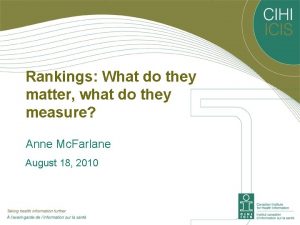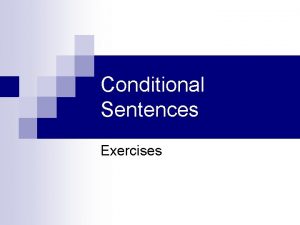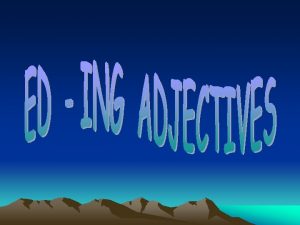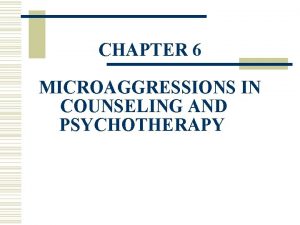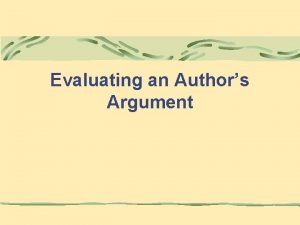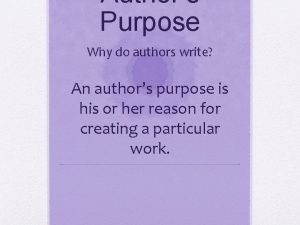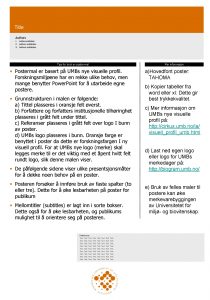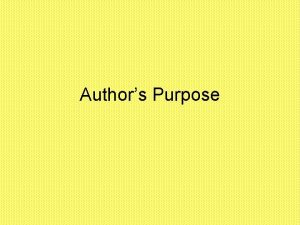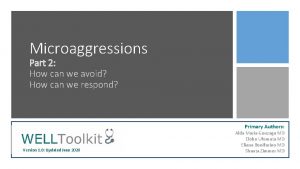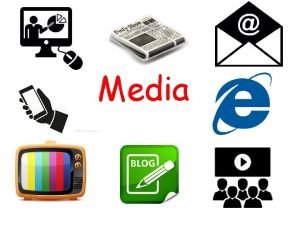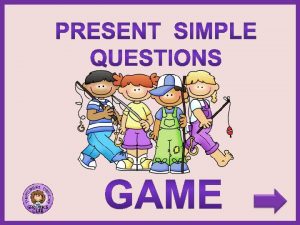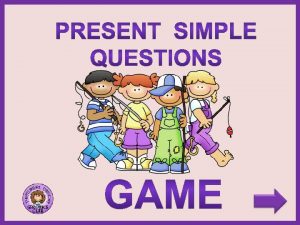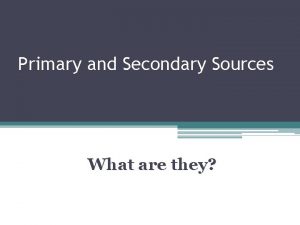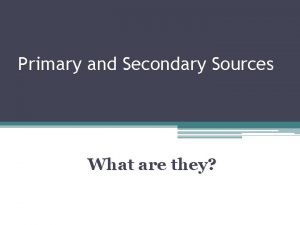Microaggressions Part I What are they Primary Authors
















- Slides: 16

Microaggressions Part I: What are they? Primary Authors: Version 1. 0: Updated June 2020 Alda Maria Gonzaga MD Eloho Ufomata MD Eliana Bonifacino MD Shanta Zimmer MD

How to use the WELL Toolkit slides These slide decks were created by the WELL Toolkit Workgroup in 2020. You may use these slides individually or as a set for non-commercial purposes. You are welcome to edit this slide deck to customize it to your setting, including the use of your own logo, but please do not substantively change the content of the work. If you present, reproduce, or distribute these slides, please acknowledge our resource, “WELL Toolkit (2020). ” For additional information and related resources, please visit: https: //gmewellness. upmc. com/

Agenda • Implicit/Unconscious Bias • Definition of Microaggression • Types of Microaggression • Effects of Microaggression

Learning Objectives 1. Describe the difference between Implicit and Unconscious Bias 2. Name three different types of microaggression 3. Be able to clearly describe the negative impact of microaggressions

Ground Rules and Disclosures • When making reflections use “I” statements • Listen carefully to what others say • Non-judgmental (even with ourselves) • Commit to having a conversation with each other • Disclosures: Acknowledgement that we are all human beings and we have biases of our own that we are actively working to mitigate • Confidentiality is expected

Implicit/Unconscious Bias • We all have them • Blindspot; Hidden Biases Of Good People (Mahzarin Banaji and Anthony Greenwald) • Implicit Association Tests (Project Implicit®) • Result of our cultural conditioning • Often biases are contrary to our personal values

Implicit vs. Unconscious Bias Implicit Unconscious • “implied though not plainly expressed” • “inherent” • “inbuilt” • “understood” • “inaccessible to the conscious mind” • “done without realizing” • “instinctive” • “unthinking”

Microaggressions • Definition • Examples • Impact

“Microaggressions are brief and commonplace verbal, behavioral, and environmental indignities, whether intentional or unintentional, that communicate hostile, derogatory, or negative slights and insults that potentially have harmful or unpleasant psychological impact on the target person or group. ” Sue, D. W. , Capodilupo, C. M. , Torino, G. C. , Bucceri, J. M. , Holder, A. M. B. , Nadal, K. L. , & Esquilin, M. (2007). Racial microaggressions in everyday life: Implications for clinical practice. American Psychologist, 62(4), 271 -286.

Microaggression can be based on Race Income Social capital Religion Ableness Gender Immigration status Sexual orientation And/or other characteristics

Types of Microaggressions 1. Microassault 2. Microinsult 3. Microinvalidation

Examples of Microaggressions • “You speak English really well” to someone born and raised in the U. S. • “Are you a nurse? ” to a female physician examining a patient • “Are you the sitter? ” to a black physician walking into a patient room • “You look too masculine” to a self-identified lesbian physician • “Minorities are still hung up on race” to a fellow physician • “Your people must be so proud of you” to a physician with an accent Montenegro RE. My Name Is Not “Interpreter”. JAMA. 2016; 315(19): 2071– 2072. doi: 10. 1001/jama. 2016. 1249

Dilemmas with Microaggressions • Clash of realities between the perpetrator and the recipient • Perpetrator views intent, while recipient views impact • The invisibility of unintentional expressions of bias • Microaggressions typically have positive intent • Perceived minimal harm of microaggressions • Lack of acknowledgement of cumulative effects • The catch-22 of responding to microaggressions • Determine if a microaggression has indeed occurred • Reaction to microaggression – doubt, fear, rationalization • Responding with anger Sue, D. W. , Capodilupo, C. M. , Torino, G. C. , Bucceri, J. M. , Holder, A. M. B. , Nadal, K. L. , & Esquilin, M. (2007). Racial microaggressions in everyday life: Implications for clinical practice. American Psychologist, 62(4), 271 -286.

Why are microaggressions “so bad”? https: //www. youtube. com/watch? v=h. Dd 3 bz. A 7450&app=desktop

BOTTOM LINE Microaggressions add up and can wear you out.

For more information: Thank you! The WELL Website https: //gmewellness. upmc. com Please email questions to: Sansea Jacobson, M. D. jacobsonsl@upmc. edu Vu Nguyen, M. D. nguyenvt 3@upmc. edu
 Mikael ferm
Mikael ferm Microaggressions in relationships
Microaggressions in relationships Microaggressions
Microaggressions Microaggressions
Microaggressions Rankings: what are they and do they matter?
Rankings: what are they and do they matter? If we meet him tomorrow we will say hello
If we meet him tomorrow we will say hello They seek him here they seek him there
They seek him here they seek him there They have not rejected you
They have not rejected you They are they which testify of me
They are they which testify of me Grammar rules frustrate me they're not logical they are so
Grammar rules frustrate me they're not logical they are so For they not know what they do
For they not know what they do Knowledge not shared is wasted
Knowledge not shared is wasted Part part whole addition
Part part whole addition Part to part ratio definition
Part to part ratio definition Brainpop ratios
Brainpop ratios What is technical description
What is technical description It is the vertical part of the front bar.
It is the vertical part of the front bar.




